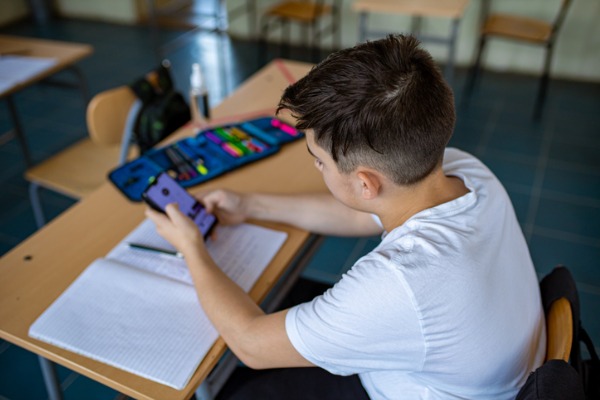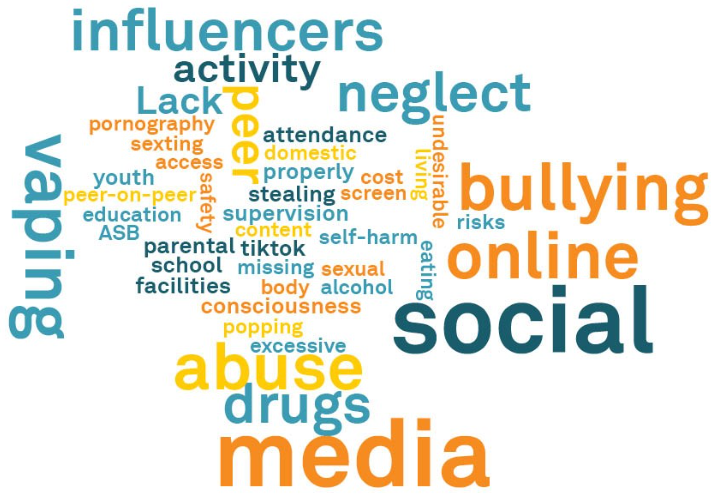Concerns over the impact of social media on children and young people have brought child exploitation to the forefront. Sarah Parker discusses how to foster a safer learning environment through education.

Child exploitation education may not be the first thing that springs to mind among the many competing priorities for a 21st century education curriculum.
However, on speaking to teachers about concerns they had for their pupils’ lives, 100% expressed concern about the impact of social media. They mentioned things like online bullying, social media influencers, peer on peer abuse, grooming risks, body image, and exposure to pornography.
Other concerns raised by teachers included vaping (57%), drug experimentation/use (42%), children missing from education (41%), lack of youth facilities (15%) and anti-social behaviour (28%).

All these factors can be linked to the exploitation of children and young people. And we should know. Catch22 is a lead provider of child exploitation support services in England.
Never heard of us? Catch22 is a national charity and social business that designs and delivers services that build resilience and aspiration in people and communities. We operate as a social business rather than campaigning for donations. In several areas, we provide support for children who are at risk of or have experienced exploitation. We also deliver the national County Lines Support & Rescue service.
Children are referred to Catch22 as having already experienced harm. The kinds of abuse children experience range from coercion to send nudes online right up to serious sexual assault or recruitment to county lines drug gangs. Exploitation can be hugely traumatic for the child and distressing for their families.
It can also have a lasting impact on their lives. It may affect their educational achievement, their job prospects, their mental health, their family relationships, and their social connections for years to come. They may experience PTSD, suicidal thoughts, blame by friends or family or school exclusion.
Catch22 staff are often invited into schools that have identified problems with grooming and child sexual or criminal exploitation. Schools that haven’t yet identified problems are sometimes jittery about tackling these subjects as they don’t want parents to assume they are ‘that kind of school.’
The reality is, they’re all ‘that kind of school.’ Child exploitation is a phenomenon that communities and safeguarding professionals are increasingly worried about- and for good reason. 27,000 young people are believed to be involved in county lines in the UK. 16.5% of 11- to 17-year-olds have experienced some form of sexual abuse, including non-contact abuse.
If you don’t think it’s happening to children in your community, you haven’t been looking carefully enough. The ubiquity of smartphones means that almost any child can be contacted anywhere at any time by people seeking to manipulate and abuse them.
That’s why we developed ‘Catch On,’ an educational resource that directly addresses child exploitation and that’s why we have made it completely free. The resource has been written by a team of frontline practitioners and a curriculum lead from one of our Catch22 schools and is aimed at years seven and eight.
The aim is to make teachers, staff, and parents aware of the issues of grooming and exploitation before children come to harm. We also wanted to empower children with the knowledge and information they needed to identify exploitative behaviours and to seek help early if necessary.
The resource contains a suite of options for a single lesson or series of lessons exploring the topic of grooming and exploitation. Materials include lesson slides with embedded links and videos, comprehensive lesson plan guidance with photocopiable activity sheets, and a handbook for parents/carers and professionals.
We have included support services and helplines in the pack, and we’ve also left space on the lesson slideshow for local referral pathways. No child should leave the lesson not knowing where to go to get help if they need it.
The resources can be downloaded. This web page also includes a brief introductory video and some FAQs, and you can listen to our explanatory webinar.
We have taken care to ensure the resources are appropriately pitched to avoid traumatising or harrowing content and we’ve included instructions for creating a safe learning environment.
We also believe that all the adults in a child’s life should be aware of the signs of exploitation and should know when the sessions are being delivered. That’s why we have created the information pack for parents and carers.
Parents need to be alert to that slightly odd question a child might ask inconveniently as they’re trying to cook the meal later that evening. They need to know this might just be the moment to put the wooden spoon down, turn and listen.
Our annual Child Protection in Education conference is your opportunity to network with leading educational lawyers, practitioners, and experts, unpack the Department for Education advice and guidance and take away proven strategies and resources to implement and evidence compliant child protection procedures and an outstanding schoolwide safeguarding culture.